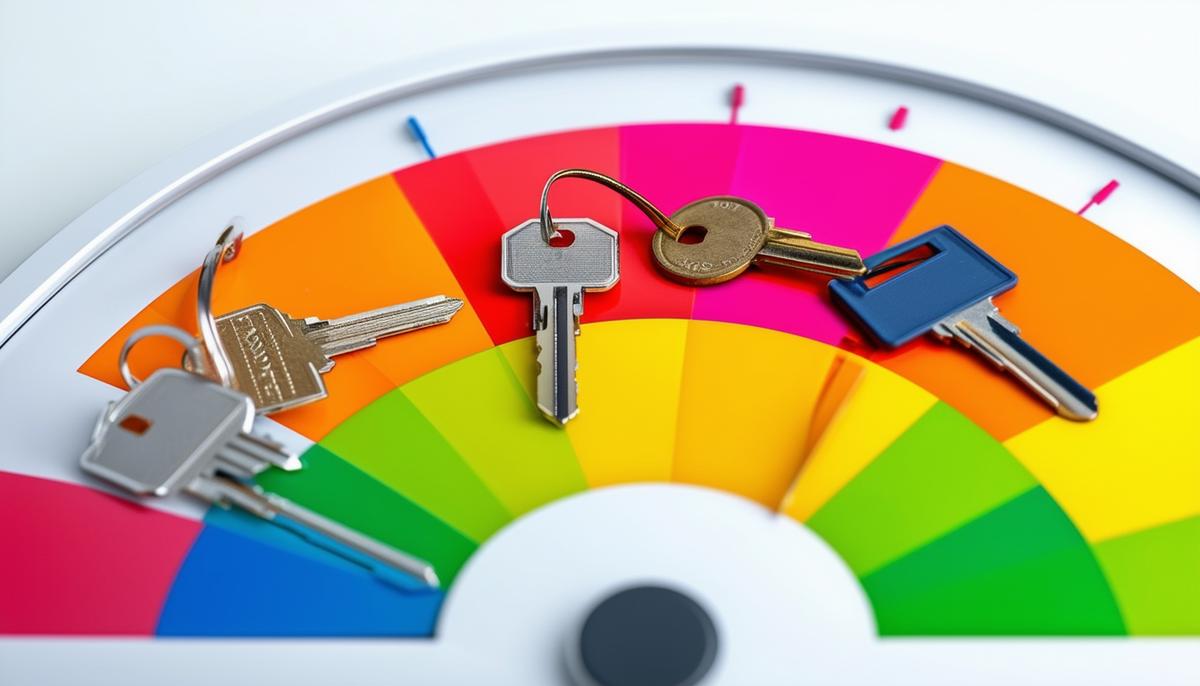Buying a home is one of the most significant decisions you'll make, packed with opportunities to learn and grow. From understanding mortgage options to navigating the buying process, there's a lot to consider. But don't worry—this journey can be both exciting and rewarding if you approach it with the right mindset.
1. You Need a 20% Down Payment to Buy a Home
This myth is outdated. While putting down 20% helps you avoid private mortgage insurance (PMI), it's not a requirement to buy a home. Many conventional loans allow down payments as low as 3%, while government-backed options like FHA loans ask for just 3.5%. USDA and VA loans even offer 0% down payment options.
PMI might apply if you're under the 20% mark, but it's not permanent. Once you reach 20% equity in your home, PMI can be removed. Consider the long-term benefits of homeownership versus renting, even with a smaller down payment.
Pro tip: Don't let the "20% down" myth hold you back. Explore your options, check your budget, and find a down payment that works for you.

2. You Must Have Perfect Credit to Get a Mortgage
Having a perfect credit score isn't necessary to secure a mortgage. While higher credit scores can help you get better interest rates, lenders consider your entire financial picture. This includes your income, employment stability, and debt-to-income ratio.
FHA loans and other government-backed options are available for those with lower credit scores. For example, FHA loans accept scores as low as 580 with a 3.5% down payment, and in some cases, even scores of 500 with a larger down payment.
Remember: Don't let concerns about your credit score discourage you from exploring homeownership. There are mortgage options designed for various credit profiles, so investigate all your possibilities.

3. You Can't Buy a Home If You Have Debt
Having debt doesn't automatically disqualify you from buying a home. Lenders focus on your debt-to-income ratio (DTI), which is the proportion of your monthly income that goes toward paying off debt. A DTI under 50% often qualifies you for a mortgage.
Lenders understand that most people carry some form of debt, whether it's student loans, car payments, or credit card balances. They're more concerned with your ability to manage your debts responsibly while taking on a mortgage.
- Solid income
- Good job stability
- Reasonable debt payments
If you have these factors, you're still a potential homeowner. Don't let your existing debt deter you from exploring your options. With the right loan and a manageable DTI, homeownership can be within reach.

4. All Mortgages Are 30-Year Fixed Rates
While 30-year fixed-rate mortgages are popular, they're not the only option available. Here are some alternatives:
- 15-year mortgages: These allow you to pay off your home in half the time, build equity faster, and save on interest. The trade-off is higher monthly payments.
- Adjustable-Rate Mortgages (ARMs): These start with a low fixed rate for a set period, then adjust annually based on market conditions. They can be suitable for those planning to move or refinance before the variable rates kick in.
- Other options: Jumbo loans, interest-only loans, and profession-specific loans are also available. Even loan terms can be customized to 20 or 25 years.
When shopping for a mortgage, consider your financial goals and lifestyle. The right mortgage should fit your specific needs, so explore various options with your lender.

5. Pre-Qualification and Pre-Approval Are the Same
Pre-qualification and pre-approval are distinct steps in the home buying process:
| Pre-qualification | Pre-approval |
|---|---|
| Preliminary step | More thorough |
| Basic financial information | Verified financial information |
| Quick estimate | Credit report pulled |
| Usually no credit check | More accurate borrowing figure |
Pre-approval demonstrates that you're a serious buyer who has been financially vetted. It can give you an edge in competitive markets, showing sellers that you're ready and able to purchase their home.
Key takeaway: Understanding the difference between these two processes can help you navigate the home buying journey more effectively.
6. You Should Always Choose the Lender With the Lowest Interest Rate
While a low interest rate is appealing, it shouldn't be the only factor in choosing a lender. Sometimes, a low rate can come with higher closing costs, origination fees, or points that make the mortgage more expensive in the long run.
Instead of focusing solely on the interest rate, pay attention to the Annual Percentage Rate (APR). The APR provides a more comprehensive picture of the loan's cost, including fees and other charges.
"When comparing lenders, ask for a breakdown of all costs associated with the loan. Look beyond the advertised rate to understand the total cost of borrowing."
Remember, the goal is to find a mortgage that's affordable both now and in the future. Take the time to understand all aspects of the loan offers you receive to make an informed decision.

7. You Can Only Get a Mortgage Through a Bank
Banks aren't the only game in town when it comes to mortgages. There are several alternatives worth exploring:
- Credit unions often offer competitive rates and personalized service. As member-focused organizations, they aim to keep things fair for their customers.
- Mortgage brokers act as intermediaries, connecting you with a network of lenders to find the best rates and terms. They do the legwork of comparison shopping for you.
- Online lenders are shaking up the industry with streamlined, digital-first processes. You can often apply from home and get quick pre-approvals or faster closing times.
By considering credit unions, mortgage brokers, and online lenders alongside traditional banks, you open yourself up to more options. Take the time to compare offers and weigh the pros and cons of each. Your ideal mortgage match may not be where you initially expected.
8. It's Cheaper to Rent Than to Buy
While renting might seem cheaper month-to-month, buying a home often makes more financial sense in the long run:
- Building equity: When you buy, your mortgage payments contribute to your own wealth instead of your landlord's.
- Tax advantages: Homeowners can often deduct mortgage interest, potentially leading to tax savings.
- Stability: Fixed-rate mortgages provide predictable payments, unlike rent which typically increases over time.
- Long-term investment: Homes generally appreciate in value, turning your purchase into a solid investment.
- Freedom: As an owner, you have the liberty to customize and improve your space as you see fit.
While homeownership does come with maintenance responsibilities, the financial and personal benefits often outweigh the costs over time. Consider your long-term goals when deciding between renting and buying.

9. You Can't Refinance if Your Home's Value Has Dropped
Even if your home's value has decreased, refinancing may still be possible. Programs like the Home Affordable Refinance Program (HARP) and other low-equity refinance options are designed to help homeowners in this situation.
These programs allow you to refinance into more favorable terms, potentially lowering your monthly payments, even if your home is underwater. They focus more on your payment history and ability to make timely payments rather than your home's current market value.
Refinancing isn't just about lowering rates. It can also involve:
- Changing your loan term
- Switching from an adjustable rate to a fixed rate
- Accessing equity for renovations
If you're facing a drop in home value, don't assume refinancing is off the table. Explore HARP and similar programs, and discuss your options with lenders. You might be surprised at the opportunities available to improve your mortgage situation.

10. The Mortgage Process Is Too Complicated and Lengthy
While getting a mortgage involves several steps, it's not as daunting as you might think. With proper preparation and guidance, the process can be manageable and even straightforward.
- Start by gathering necessary documents like bank statements, tax returns, and pay stubs. This preparation will smooth the path ahead.
- Work with a mortgage advisor. These professionals can guide you through the process, explain your options, and help you find the best deal.
- The timeline varies, but it's not endless. Once you've submitted your application, the underwriting process begins. With your documents in order, this can move along efficiently.
- At closing, you'll sign a lot of paperwork, but your advisor will walk you through each document.
The key to a smooth mortgage process is planning, organization, and working with knowledgeable professionals. With the right approach, you might find it more manageable than you expected.

Remember, buying a home isn't just about finding a place to live; it's about investing in your future. By staying informed and proactive, you can turn this process into an enjoyable adventure. Keep your eyes on the prize—a beautiful new home that's all yours!

